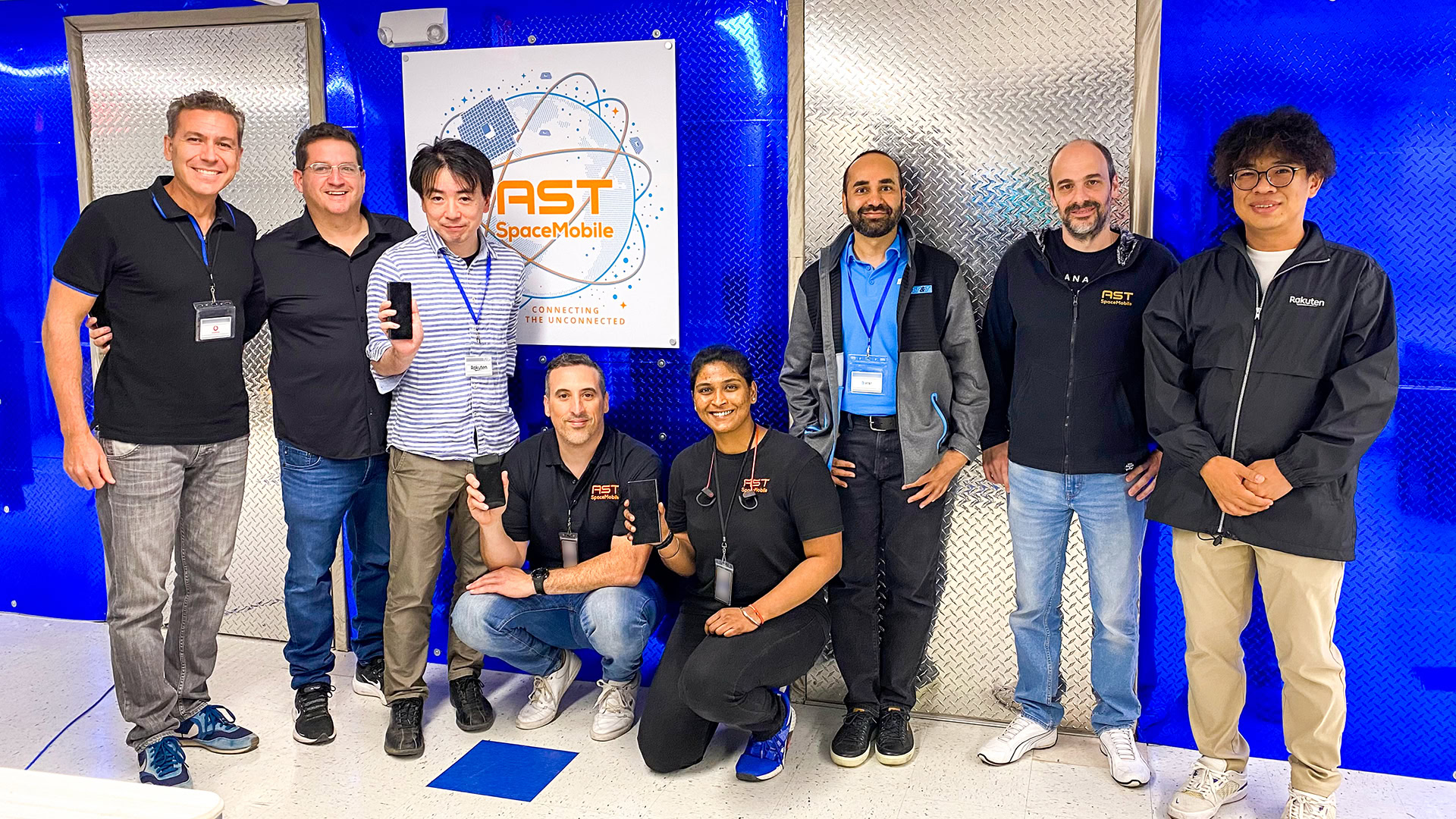Affiliate links on Android Authority may earn us a commission. Learn more.
History made: First voice call via satellite using a normal phone just happened
- AST SpaceMobile and AT&T just made the first satellite call using an unmodified smartphone.
- The call went from Texas to Japan, received by a retail Samsung Galaxy S22 Ultra.
- This could allow any smartphone to make/receive calls anywhere in the world.
Satellite phones are nothing new. These big, bulky phones connect directly to a satellite using specialized hardware. Unfortunately, with the way smartphones are designed, it hasn’t been possible to cram all that satellite phone technology into a normal phone.
A company called AST SpaceMobile, however, just proved you don’t need to cram anything into a smartphone for satellite connectivity. The company — in partnership with AT&T, a major investor — just made the first satellite call using off-the-shelf smartphones, specifically the Samsung Galaxy S22 Ultra. AST made the call from Texas to a phone in Japan.
You might be thinking, “But wait, I thought the hardware to do this is only in newer phones, like the Galaxy S23 with the Snapdragon 8 Gen 2 inside.” That’s true, but that’s a whole different thing. The Snapdragon 8 Gen 2 supports satellite communication (even if Samsung hasn’t done anything with it yet), but only through text messages. This system uses the Iridium satellite network and works the same as Garmin’s InReach products and its competitors. You can’t use it for phone calls.
With this first satellite call, the signal originating from Texas went from a Galaxy S22 Ultra to a BlueWalker 3 satellite, where it then came back down to Japan to another smartphone. Unspecified AT&T spectrum acted as a middle-man, which is the reason why the phones themselves didn’t need to be modified for this to work. Theoretically, you could do this with any LTE-capable phone.
According to AST, this initial test also proved what we all really want to know: that the BlueWalker 3 could support cellular broadband data speeds. In other words, this test proves that connecting anyone anywhere — even without expensive cellular tower infrastructure — is possible, even with smartphones remaining unchanged.
In the future, this could allow folks who live in rural areas or developing nations to have cellular connectivity. This could also reduce strain on (or even usurp) traditional cell towers when it comes to voice, text, and data signals.
